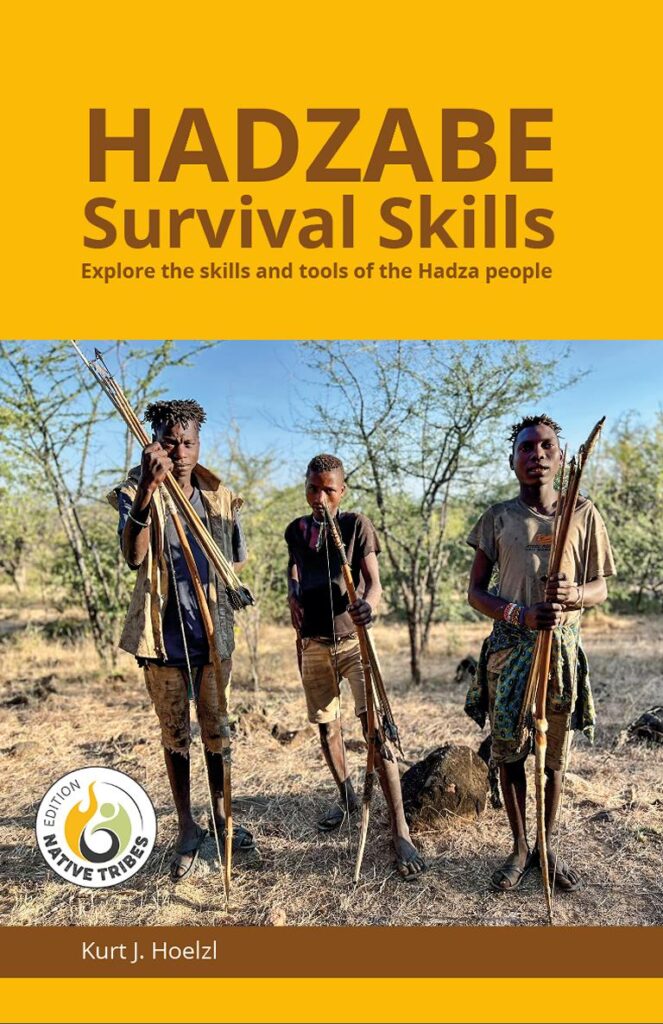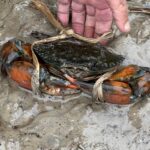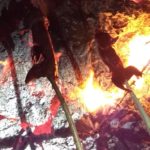The Rock Vedda people at Rathugala near Gal Oya in Sri Lanka collect honey from stingless Dammar bees. This last remaining band of Rock Veddas in Sri Lanka consists of 68 families, of which only ten of them still live their traditional life in the forests. We were fortunate to have been connected to the traditional leader of this band. He showed us various skills and knowledge of the original Rock Veddas, including collecting honey from stingless bees. After him, all these practical skills will be lost, as he has four daughters and only one son. All five of them are formally educated and prefer the Singhalese way of life. They – and especially his son, who would be his successor – are not interested in living in the forests anymore.
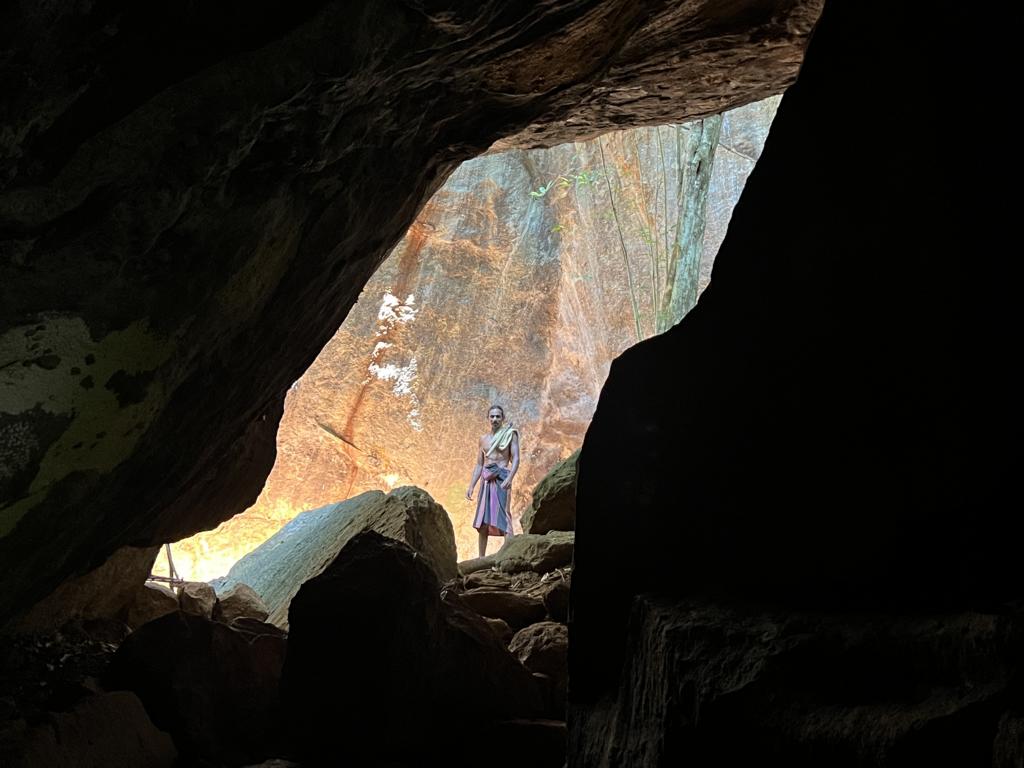
Just for clarification. All the Vedda people in Sri Lanka are divided into three groups: The Village Veddas, the Rock Veddas, and the Coastal Veddas. As of 2025, the biggest group, the Village Veddas, are centered around Dambana, which acts like an open-air museum. The Rock Veddas shrank to ten traditional families, and the Coastal Veddas were all assimilated by the Tamils of the East Coast.
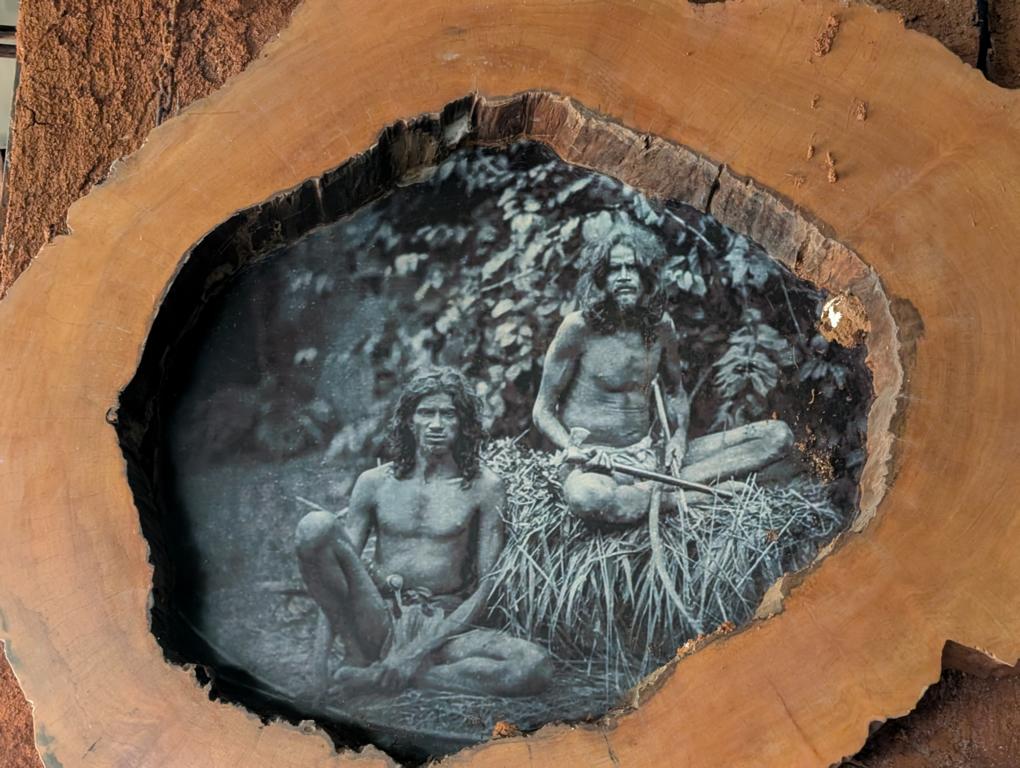
The Rock Vedda person you see in the following pictures is the successor of a long line of proud Rock Vedda hunter-gatherers, and with very high likelihood, the last headman of this group.
Which bee species are producing honey in Sri Lanka?
Three species of true honey bees (Apis spp.) and one species of stingless honey bees (Tetragonula sp.) occur in the wild in Sri Lanka. These four species are:
- Asian hive honey bee (Apis cerana indica). This bee species is often domesticated, as it nests in enclosed spaces, such as tree cavities or man-made bee-hives.
- Giant honey bee (Apis dorsata). It builds large, open nests on exposed surfaces, like branches on high trees or cliffs. These nests are often single combs.
- Dwarf honey bee (Apis florea). Also, this species builds open nests in the shape of single combs on branches, but the bees and combs are considerably smaller than those of the Giant honey bees.
- Dammar bee (Tetragonula iridipennis). These stingless bees are tiny, and they defend their nest by biting, instead of stinging.
All three true honey bee species build their geometrically regular combs from wax. Only Dammar bees use primarily plant resin as a construction material (Cerumen) for their storage structures.
Additional information about Dammar bees
The nests of these bees are built within protected spaces, like rock crevices or tree hollows. Also, domestication was tried, and colonies of Dammar bees have been successfully reared in clay pots.
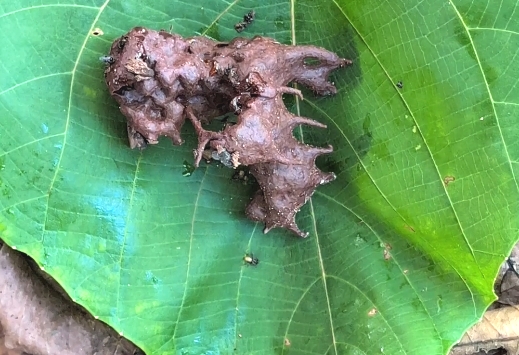
Within the protected spaces, they use plant resin mixed with wax to create button-shaped pollen pods and irregularly formed sacs used as honey pods. The resin-wax mixture surrounding the honey was dark-brown in color, which indicates a high amount of resin compared to lighter colored beeswax. In the picture above, a Dammar bee can be seen below the honey pod.
Dammar bees are known for their unique nesting behavior. For example, they close up the entrance used during the day to keep out ants and use another exit/entrance during the night. Another example is that they construct false nests to deter intruders.
Collection of honey from Dammar bees
All traditional Veddas carry, when walking in the forests, their axe on their shoulders. The headman of the Rathugala Rock Veddas balanced his axe on his shoulder even when climbing the tree, which held two nests of Dammar bees.
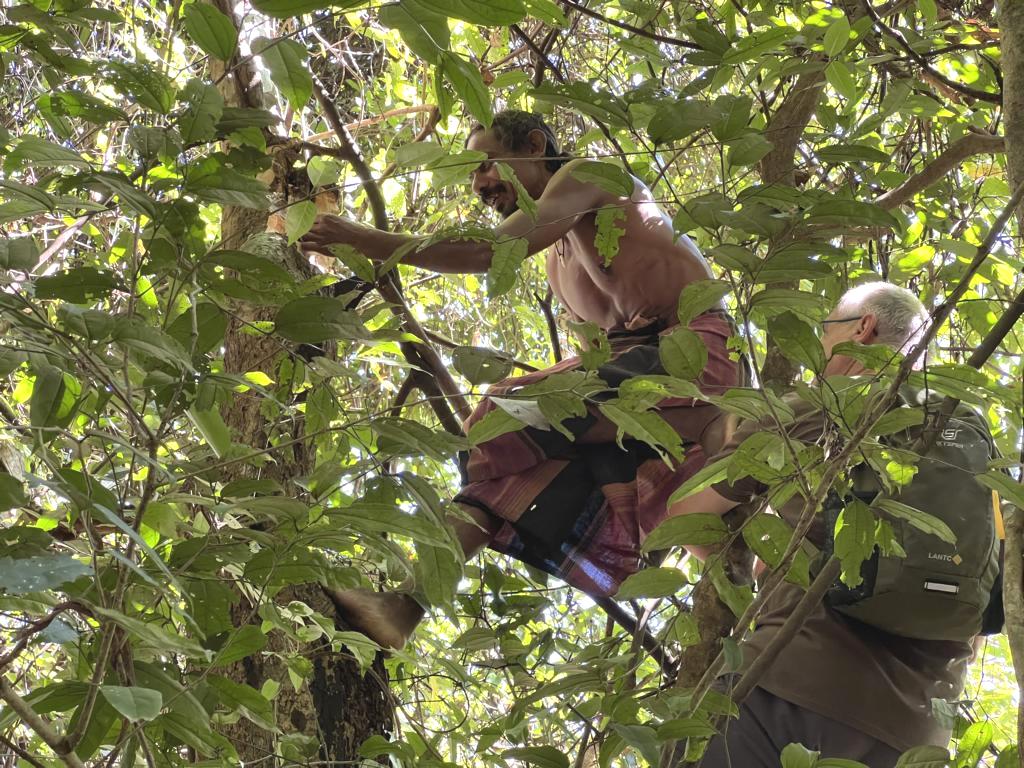
There, he hacked open their nests and retrieved the two honey pods. The yellow-colored pollen pods were left in place.

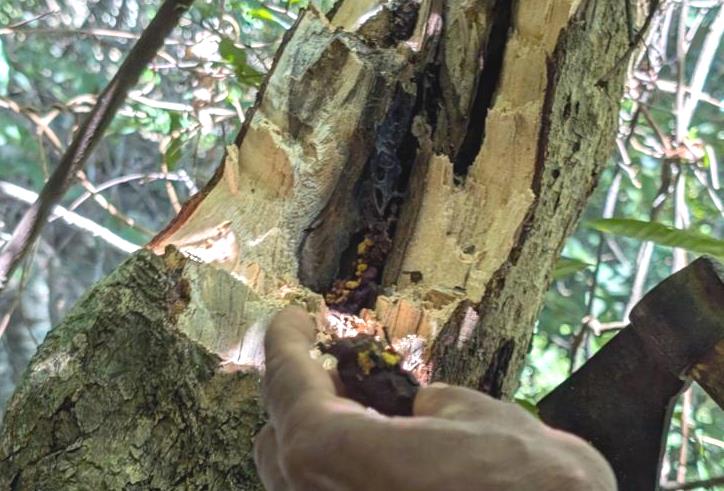
Squeezing the honey from the resin pods
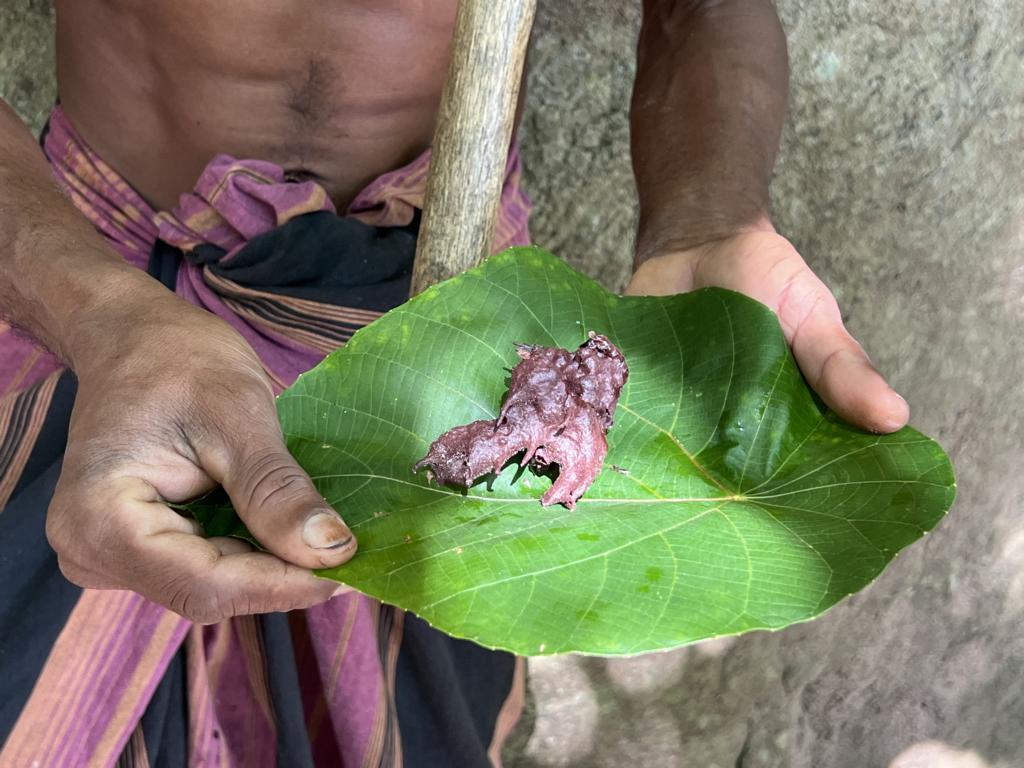
The honey pods were squeezed with the fingers until just the resin-wax cerumen remained, and the honey was collected in a leaf.
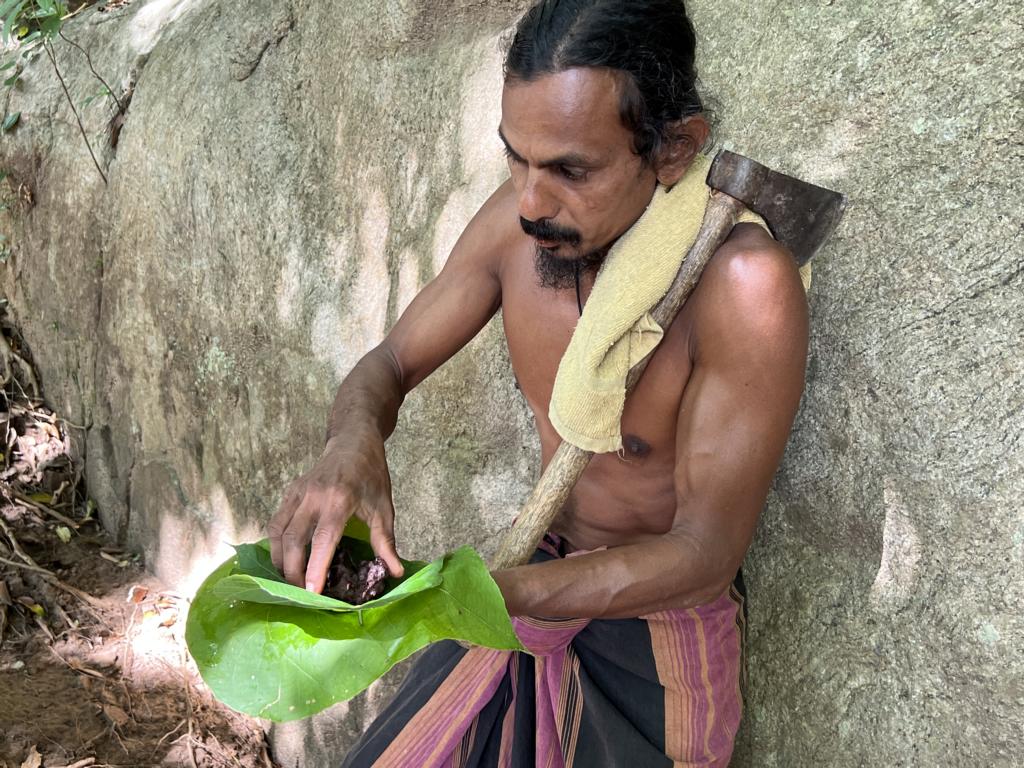


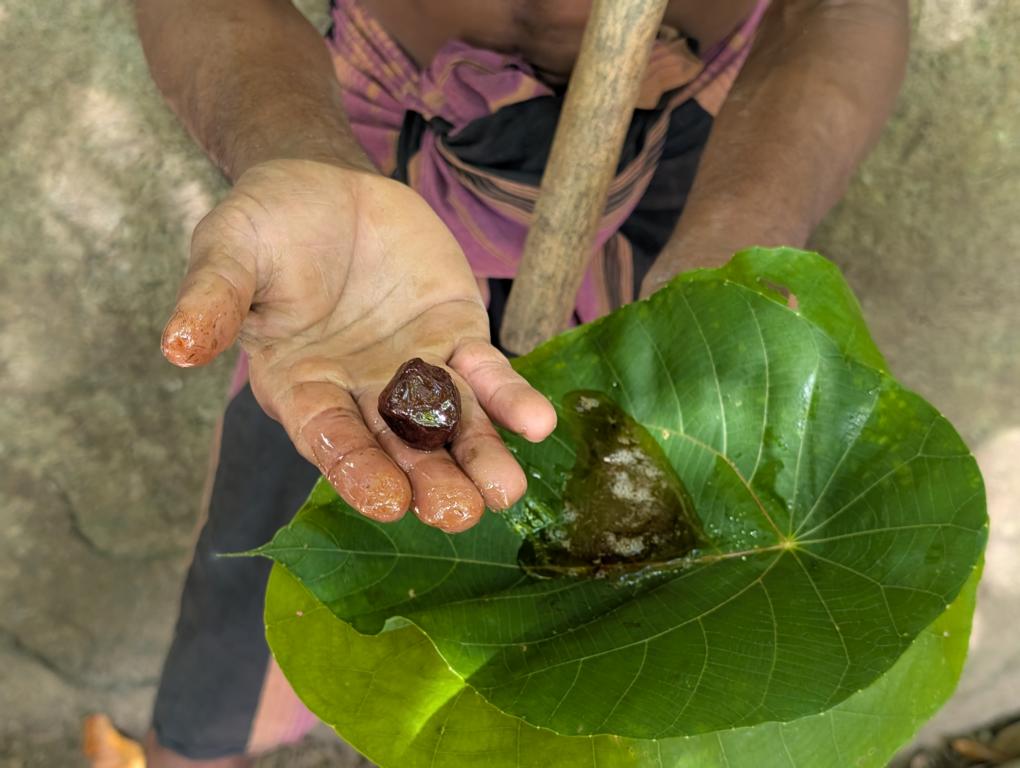
The squeezed-out honey tasted very sweet and aromatic, and was a real treat.

Lessons learned about collecting honey from Dammar bees in Sri Lanka:
- Dammar bees and their nests are widespread in the Gal Oya area of Sri Lanka.
- Nowadays, this non-sustainable harvesting method of cutting open the hives is only applied by a handful of remaining Rock Veddas. The vast majority of modern Sri Lankans, whether Singhalese or Tamils, are very environmentally conscious.
- At harvesting, the bee queens will survive and start a new brood.
Further readings about Bees found on this website:
Sweat bees – not a danger, but a nuisance
Stingless bee honey collected by Hadza people
Collecting honey in a rock crevice in Vietnam
Alternative beehives in D.R. Congo
Improvised protective equipment for beekeepers
Wax extraction from honeycombs
.


